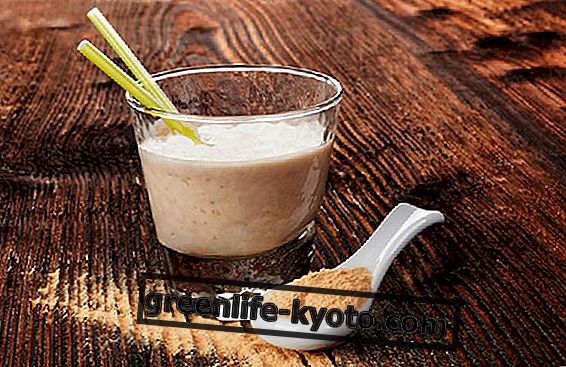
The summer is almost upon us and many of us feel the need to get back into shape to get prepared for the swimsuit test: let's see how to reach our ideal weight and keep it through a balanced diet that, besides getting back into shape, will make us feel more active and in a good mood.
What to eat to get back in shape
To lose a few pounds and get back in shape, it is sufficient to reduce calories and follow a correct and balanced diet, which brings the body the right amount of energy and nutrients.
A balanced diet, in addition to getting us back in shape, increases our general level of well-being, making us feel more active and improving mood and general health.
A balanced diet provides that the total energy of the day derives for 55-60% from carbohydrates (of which no more than 12% from simple sugars), to no more than 15% from proteins and 30% from fats ( of which less than 10% saturated fat). In this way, the adequate intake of macronutrients would also guarantee the intake of micronutrients, ie vitamins and minerals .
The food pyramid helps us to choose the food. It recommends first of all to carry out physical activity every day and to consume daily cereals, fruit, vegetables and legumes, olive oil, fresh cheeses and yogurt ; according to the food pyramid, white meat, eggs, fish and sugars should be consumed a few times a week, while the consumption of red meat should be reduced to a few times a month.
To get back in shape it is therefore not necessary, or even recommended, to eliminate a category of food: particularly restrictive diets, such as diets that greatly reduce the intake of carbohydrates, in addition to being risky for health, work in the short period but do not guarantee a long-term weight loss.
To lose weight and maintain your ideal weight it is far preferable to follow a balanced diet, which initially reduces caloric intake but without eliminating carbohydrates and fats and without exceeding protein intake.
Read also Let's get back in shape: when it is necessary to go on a diet >>
Getting into shape: quality and quantity of foods
We have seen what to eat, but what are the quantities to respect in order not to exceed the energy supply? To know how much to eat we need to know how much a portion is and probably a portion is less than we expect.
Starting from carbohydrates, which we should eat every day, a portion of breakfast cereals, rusks and biscuits is equal to 30 grams; a portion of pasta, rice, corn, cous cous corresponds instead to 80 grams; a portion of bread is equal to 50 grams and a portion of potatoes corresponds to 200 grams.
Better to choose wholemeal pasta, bread and rice with a low glycemic index and limit the consumption of simple sugars such as white sugar but also honey, rice syrup or agave etc.
In addition to cereals, we should consume at least 5 portions of fruit and vegetables a day, to ensure the right amount of fiber, vitamins and minerals : a portion of fruit corresponds to 150 grams, ie a fruit of medium size or two small fruits, while a portion of vegetables is equal to 250 grams (50 grams in the case of lettuce).
The protein sources are represented by legumes and food of animal origin: a portion of milk or yogurt, also vegetable, corresponds to a glass or a jar (125 grams), a portion of legumes is equal to 50 grams of dried vegetables; a portion of tofu or tempeh is equal to 100 grams.
The proteins of vegetable origin can be consumed every day : the legumes in particular contribute to the contribution of fiber, which is important for increasing the sense of satiety and for regulating intestinal function; among soy-based products, it is better to choose fermented ones, such as yoghurt, tempeh or fermented tofu because they are more digestible.
As for animal protein sources, a portion of fish corresponds to 150 grams and goes down to 100 grams for meat and fresh cheese; for aged cheeses, for preserved fish such as canned tuna or smoked salmon, for preserved meats such as cured meats and for eggs, a portion is equal to 50 grams.
The consumption of animal proteins should be limited to avoid an excessive intake of cholesterol: the consumption of aged cheeses, white meats and eggs should be reduced to once a week, while red meat, preserved meat and preserved fish should not be eaten more than once or twice a month; fish can also be consumed twice a week .
Finally, let's talk about fats : better to avoid or greatly reduce the saturated ones that come from butter, margarine, palm oil and coconut and prefer the extra virgin olive oil to be consumed raw every day (one-two tablespoons a day in salads, in soups, in sauces etc.) and dried fruit (a portion of dried fruit corresponds to 30 grams).
Distribute calories to get back in shape
In addition to the quantity and quality of the calories we take in, energy distribution during the day is also important. The correct distribution of calories, in fact, allows us to keep blood sugar stable and have the right energy throughout the day, avoiding sudden hunger attacks and consequent binge eating out of the meal.
Breakfast should represent about 20% of the energy of the day, while mid-morning and mid-afternoon snacks should give 5% of the total caloric intake; lunch and dinner should bring 35% and 30% of total daily energy, respectively .
For example, for a diet of 2000 Kcal, the breakfast will be 400 kcal, the snack and the snack will be equal to 100 kcal, the lunch will bring 700 kcal and the dinner 600.













